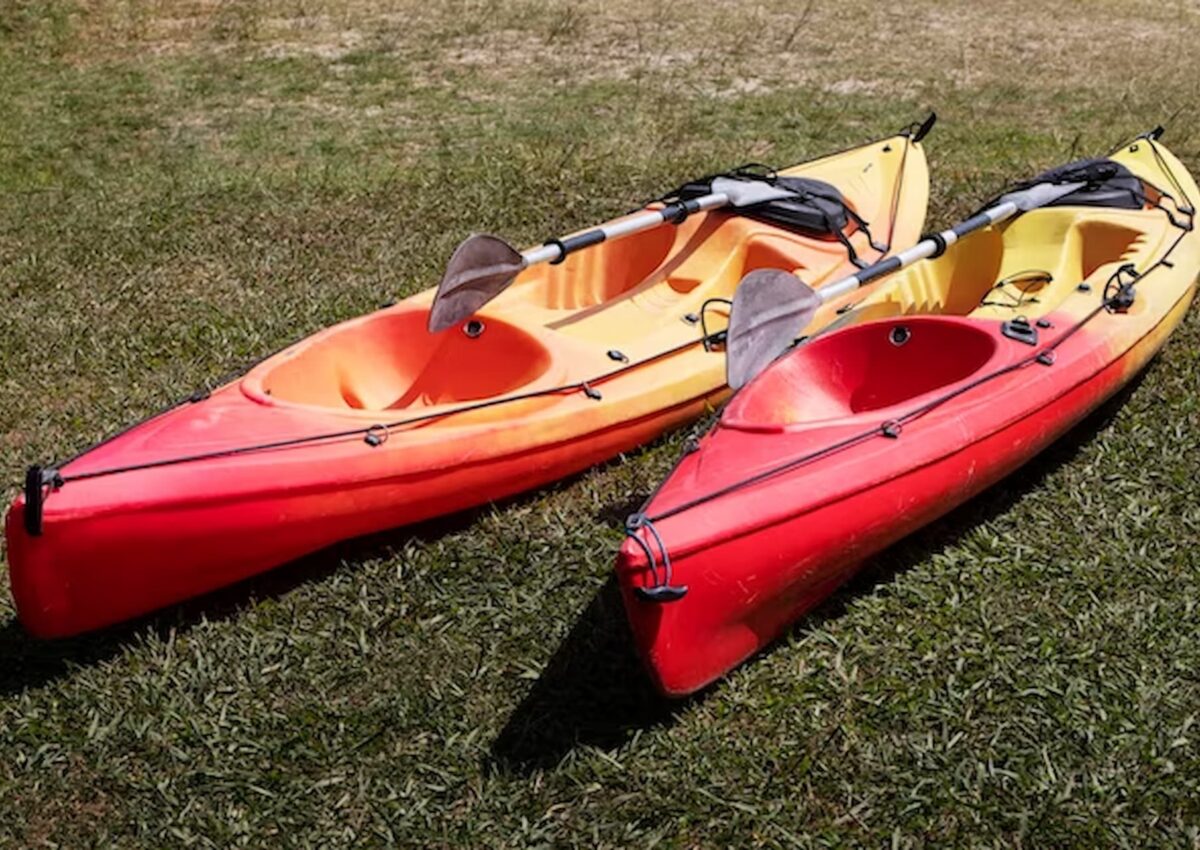
Winter often conjures images of cosy fireplaces, snow-covered landscapes, and chilly outdoor activities. While snow sports like skiing and snowboarding dominate the winter scene, there’s an unconventional yet thrilling way to embrace the snowy season – kayaking in the snow.
In this blog post, we’ll explore the possibilities and considerations of taking your kayak out into the winter wonderland. At Cambridge Kayaks we have a range of kayaks for sale which are suitable for year round paddling, so dive right in and find out why a winter adventure on the water could be the perfect recreational activity during the colder months.
The Allure Of Winter Kayaking
Kayaking in the snow might sound unconventional, but it’s a unique and exhilarating experience that adventurous paddlers can’t resist.
Picture yourself gliding across a serene lake or river, surrounded by the tranquillity of a snowy landscape.
The world takes on a magical quality, and the familiar waterways transform into a serene playground for those willing to brave the cold.
The Gear
Before embarking on a winter kayaking adventure, it’s crucial to invest in the right gear.
Start with a kayak suitable for cold weather conditions. Look for models designed for stability, with a closed cockpit to keep you dry and warm.
Additionally, dress in layers, opting for waterproof and insulated clothing to shield yourself from the cold. Don’t forget to wear a reliable life jacket, as safety should always be a top priority.
Choosing the Right Location
Not all bodies of water are suitable for winter kayaking, so it’s essential to choose your location wisely.
Opt for calm, slow-moving rivers or lakes with minimal ice cover. Avoid areas with strong currents or potential hazards, as winter conditions can amplify risks.
Research the water temperature, weather forecast, and local regulations before heading out to ensure a safe and enjoyable experience.
Understanding Ice Conditions
While kayaking in snow-covered landscapes can be magical, it’s crucial to be aware of ice conditions.
Thin ice can be deceptive, and venturing too close to frozen areas poses significant risks. Keep a safe distance from ice and be cautious around any potential hazards.
Remember that ice thickness can vary, and it’s crucial to stay informed about the local conditions.
Winter Wildlife Encounters
One of the unexpected joys of kayaking in the snow is the chance to witness winter wildlife in their natural habitat.
Many animals are more active during the colder months, and paddling quietly through the water allows you to observe them without disturbing their routines. Keep an eye out for winter birds, deer, and other creatures that call snowy landscapes home.
Preparation and Safety Measures
Before setting out on a winter kayaking adventure, thorough preparation is key.
Inform someone about your plans, including your chosen location and estimated return time. Carry essential safety equipment, such as a whistle, a first aid kit, and a communication device.
Check the weather forecast regularly, as winter conditions can change rapidly. It’s also wise to paddle with a buddy for added safety and enjoyment.
Tips For A Successful Winter Kayaking Experience
1. Choose the Right Kayak
Invest in a kayak designed for cold weather conditions, with features such as a closed cockpit, stability, and insulation.
2. Dress in Layers
Wear waterproof and insulated clothing in layers to protect yourself from the cold. Don’t forget to cover extremities like hands, feet, and head.
3. Check Ice Conditions
Stay informed about ice conditions in your chosen location. Avoid areas with thin ice, and keep a safe distance from frozen surfaces.
4. Plan Your Route
Choose calm and slow-moving waters, and plan your route in advance. Be aware of potential hazards and obstacles along the way.
5. Monitor Weather Conditions
Regularly check the weather forecast and be prepared for changing conditions. Strong winds and snowfall can impact your kayaking experience.
6. Wildlife Observation
Take advantage of the opportunity to observe winter wildlife. Keep a respectful distance and enjoy the unique sights and sounds of nature.
7. Safety First
Prioritise safety by wearing a life jacket at all times, carrying safety equipment, and paddling with a buddy whenever possible.
Kayaking in the snow offers a one-of-a-kind experience for those seeking adventure and a fresh perspective on winter. With the right gear, preparation, and a mindset for safety, paddlers can transform familiar waterways into a serene winter wonderland.
Embrace the beauty of snowy landscapes, witness the magic of winter wildlife, and embark on a unique kayaking journey that will leave you with unforgettable memories.
Winter kayaking isn’t just an activity – it’s an opportunity to connect with nature in a way that few have experienced.




